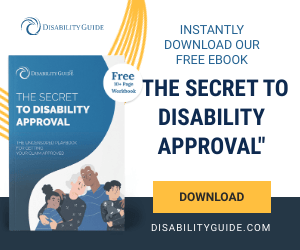About SSI & SSDI
Don’t Miss Out On These Top 10 Veterans Day Food Freebies

All across the nation, businesses are lining up to pay tribute to the men and women who have served our country with selfless honor & dignity. Our hats are off to those that have in the past & continue to dare to take the oath to fight for and defend the freedom and liberties that we enjoy as citizens of the United States of America.
Thank you to all of the service men and women active-duty, and veterans alike of the United States Military. We salute you.
Don’t forget to take a look at our top 10 Veterans Day Food Freebies after the video.
Service men & women must show valid military ID or other proof of service at participating restaurants and businesses to take advantage of these benefits.
Contents
- 1 Top 10 Veterans Day Food Freebies
- 1.1 1. Outback Steakhouse: Free Bloomin’ Onion and a beverage.
- 1.2 2. Applebee’s: One Free “Thank You” Meal
- 1.3 3. Denny’s: Free Grand Slam Breakfast from 5 a.m. until noon.
- 1.4 4. Red Lobster: Free Appetizer
- 1.5 5. Red Robin: Free Red’s Tavern Double Burger and Bottomless Fries.
- 1.6 6. Golden Corral: Free Buffet Meal & Beverage from 5 to 9p.m.
- 1.7 7. Hooters: Free Entree
- 1.8 8. California Pizza Kitchen: Free Entree
- 1.9 9. Friendly’s: Free breakfast, lunch or dinner.
- 1.10 10. Cracker Barrel: Free Double Chocolate Fudge Coca-Cola Cake dessert
- 1.11 11. BONUS: DoubleTree by Hilton Cookies: Free Chocolate Chip Cookie
Top 10 Veterans Day Food Freebies
1. Outback Steakhouse: Free Bloomin’ Onion and a beverage.
2. Applebee’s: One Free “Thank You” Meal
3. Denny’s: Free Grand Slam Breakfast from 5 a.m. until noon.
4. Red Lobster: Free Appetizer
5. Red Robin: Free Red’s Tavern Double Burger and Bottomless Fries.
6. Golden Corral: Free Buffet Meal & Beverage from 5 to 9p.m.
7. Hooters: Free Entree
8. California Pizza Kitchen: Free Entree
9. Friendly’s: Free breakfast, lunch or dinner.
10. Cracker Barrel: Free Double Chocolate Fudge Coca-Cola Cake dessert
11. BONUS: DoubleTree by Hilton Cookies: Free Chocolate Chip Cookie
Dates, times, terms, & restrictions apply. Visit here for more details.
We at Disability Guide thank you Veterans for your service. It’s directly because of your efforts & service that we live freely in the greatest country on earth.
About SSI & SSDI
SSDI or SSI: What Makes These Programs Different?

If you are disabled, you can receive help from the government in the form of SSDI or SSI. These two programs help disabled citizens pay for their basic needs. However, the two have different criteria for who to award money to and what you might be eligible for.
SSDI (Social Security Disability Insurance) is an entitlement program that you can access if you have worked before and paid into Social Security retirement benefits. The program allows you to access those benefits early because you have become disabled. SSI (Social Security Income) is for people who are in special financial need and are disabled. Because this program is funded completely by general taxes, there are stringent requirements that one must fulfill in order to receive it.
Here are some of the main differences between SSDI and SSI:
SSDI
- Funded through payroll taxes.
- Available to qualified people who have worked for a certain number of years and contributed to the Social Security trust fund through FICA Social Security taxes.
- Earned after receiving a certain number of “work credits.”
- Eligible for Medicare only after receiving SSDI for two years.
- No maximum asset amount requirements.
- Must be disabled for a five-month waiting period before receiving benefits.
- Spouse and children (over the age of 18) are eligible for partial dependent “auxiliary benefits.”
- Must be younger than 65 to qualify.
SSI
- Funded by general fund taxes.
- Based on financial need.
- Awarded according to low income and low assets—does not deal with work history.
- Can receive Medicaid if eligible for SSI.
- Must have assets less than $2,000 (if single) or $3,000 (if a couple), excluding certain items like primary residence.
- Can receive benefits instantly once approved.
- No dependent benefits.
- Must be blind, disabled, or 65 or older to qualify.
What Do They Have in Common?
SSDI and SSI are both for people who are disabled or blind. However, the eligibility is different when it comes to how old you are. If you are over 65, you can apply for SSI and receive it if your needs match the requirements. SSDI does not cover non-disabled seniors. Those who are not disabled and over the age of 65 are qualified to receive Social Security retirement benefits.
Both programs provide benefits that help take care of your basic needs. Because SSI is a needs-based program, it provides the similar benefit amounts for everyone enrolled. The amount provided by SSI is flexible, meaning you can receive any amount up to the maximum dependent on your need.
On the other hand, SSDI is an entitlement program. Benefits vary according to formulas that the Social Security Administration uses to calculate your specific benefits. The best place to get an estimate of your SSDI benefits is on your Social Security statement. You can see this statement by creating an account on the Social Security Administration’s official website. You can also learn about your Social Security status and other important information at this site.
Even though both the SSI and the SSDI are administered through the Social Security Administration, they have very different application processes. To apply for SSDI, go to the SSA’s online application and follow instructions. SSI is a more difficult process, so we recommend applying at your local Social Security office or on the phone.
About SSI & SSDI
6 Different Types of Service Animals

Did you know that today is National Dog Day? Every August 26, Americans everywhere celebrate the special dogs in their lives. And today we thought we’d celebrate the holiday by talking about service animals.
Animals can help those in need in many ways. A therapy dog is a companion animal that improves mental health by providing assistance to someone with a psychiatric disability, such as post traumatic stress disorder. But these trained dogs can be much more than just a comfort pet.
According to the ADA, a service animal is any animal that provides assistance to a person with a disability. Unlike an emotional support animal for PTSD, service animals also perform tasks to help their owner function normally. This can be anything from supporting them while they walk, retrieving items they drop, or even reminding them to take medication. Traditionally, when we think of a service animal we think of guide dogs for the blind, and for good reason. According to the National Organization on Disability, the vast majority of all services animals are dogs.
1. Miniature horses—This type of service animal has been on the rise in popularity since they’re a great choice for someone with a mobility impairment who needs physical support to walk. Many people who are blind use a miniature horse instead of a guide dog, and there’s actually an entire Guide Horse Foundation for this very purpose. Apparently the miniature horse is really good at its job. The species is naturally cautious, mild-mannered, and sharp-eyed, all of which make for a great assistance animal. And on top of all that, miniature horses can live for up to 30 years. That’s five to seven times longer than your average service dog.But there are actually all kinds of animals that assist people with disabilities. To give you an idea of the variety, here are six animals other than dogs that you probably had no idea could be an awesome service animal:
2. Ferrets—Another unlikely service animal, ferrets have the natural advantages of being easy-going, highly social, and easily transportable. Ferrets make great emotional support animals since they enjoy burrowing close to their owners, which can be extremely comforting to people needing emotional support. But ferrets make great service animals too. These critters are known for alerting their owners when they’re about to experience a seizure, and ferrets can also be trained to wake someone up, remind their owner to take medication, and even interrupt harmful behaviors. Not bad, ferrets.
3. Boa Constrictors—This creature might not be the first animal you’d choose to keep in your home, but they actually make great service animals. These snakes are known for helping patients with bipolar disorder, obsessive compulsive disorder, and panic disorders, and there are even cases when these snakes can be used to prevent medical emergencies. One man in Washington has a friendly boa that will squeeze him more tightly when it senses he’s about to have a seizure, giving him enough time to take his medication or go to a safer location until his seizure passes.
4. Parrots—This is a popular animal for treating psychiatric disorders, namely because many species of parrot have the ability to talk to their owners and deescalate them in stressful situations (something a psychiatric service dog can’t do). A great example of this a man named Jim Eggers from St. Louis who relies on his service parrot, Sadie. The parrot has been trained to repeat the mantra, “It’s OK, Jim. Calm down, Jim. You’re all right, Jim. I’m here, Jim” to calm Jim down whenever she senses he’s about to have a violent episode. Jim used to say the mantra to himself, but now with Sadie’s help he can pre-empt episodes even before they start. Sadie is also trained to alert Jim when someone comes to the door and when he leaves the faucet running.
5. Potbelly pigs—Both highly intelligent and mild-mannered, potbellied pigs can be trained to do all the same functions as the traditional service dog. The only difference is that they’re far cleaner than dogs and also don’t shed as much. Sounds like a good bargain. Plus this particular species is known for being good with kids. Lois Brady from California takes her service pig Buttercup to schools to visit children on the autism spectrum. Since most children don’t have any preconceived ideas about pigs, Brady has found that fewer students are afraid of Buttercup than of a big dog. The pig’s gentle nature also come in handy when he encounters students with aggressive tendencies that would probably make a dog turn around and attack.
6. Capuchin Monkeys—Another very exotic service animal choice is the capuchin monkey. These little helpers are native to South America and weigh about 6 to 10 pounds. Capuchins are especially talented at grasping and retrieving, which makes them invaluable companions for quadriplegics and other disabilities that affect fine motor skills. These monkey can perform nearly any specific task: bringing water, fetching phones, performing basic chores, opening doors, and even feeding someone. There’s an entire organization in Boston called Monkey Helpers that trains little capuchins to be the hands for people who can’t use their own.
Want to read more about service animals? Check out our blog post on how to register a service animal.
About SSI & SSDI
Social Security Updates for July 2015

Like any government institution, Social Security is always changing. If you’re interested in what’s happening in Congress right now, here’s a peek at some current 2015 legislation regarding Social Security:
Ensuring Access to Clinical Trials Act of 2015 (July 16)
This bill allows people receiving Supplemental Security Income (SSI) benefits to participate in clinical trials freely. Because many of these individuals have rare diseases or disabling conditions, they’re often eligible to participate in paid clinical trials. Congress passed a bill in 2009 excluding this compensation from SSI, but the bill was set to expire in October of 2015. The Ensuring Access to Clinical Trials Act of 2015 will effectively remove the expiration date and allow these people to continue participating in clinical trials without the danger of losing their benefits. The bill passed through the Senate with unanimous consent and will now move to the House for further consideration.
Federal Improper Payments Coordination Act of 2015 (July 28)
This bill is designed to grant federal U.S. agencies access to the SSA’s death records through the Do Not Pay (DNP) Initiative in an attempt to prevent and recover improper or duplicate payments. The SSA already shares its death records for research and statistical purposes, but this bill will be improving the sharing and use of the SSA’s data in order to prevent fraud. The bill passed through the Senate with unanimous consent and will now move to the House for further consideration. You can visit the SSA’s website to read more about this bill.
2015 Trustees Report
Every year the Social Security Board of Trustees releases its annual report to Congress. As usual the report showed a surplus of Social Security funds, a nearly $25 billion surplus so far this year. But the board is still projecting that the Social Security Disability Insurance Trust Fund will be depleted in late 2016. Not surprisingly they’re encouraging lawmakers to at least temporarily increase resources to meet the current disability financial needs before 2016. Otherwise disability benefits will need to be cut by 20 percent.
In the past Congress has rebalanced Social Security’s funds to ward off shortfalls, but expansion of the program is another popular option that might occur. Or abolition of the program altogether. How Congress plans to respond remains to be seen, but the Social Security Trustees seem to be in agreement that whatever Congress decides to do, they should do it fast.
Check out the SSA’s website to read the full synopsis of the Trustees Report.
-

 About SSI & SSDI9 years ago
About SSI & SSDI9 years ago6 Different Types of Service Animals
-

 Getting Approved10 years ago
Getting Approved10 years agoWill Medical Marijuana Affect My Social Security Disability Case?
-

 About SSI & SSDI10 years ago
About SSI & SSDI10 years agoHow the Social Security Blue Book of Impairments Can Affect Your Disability Claim
-

 About SSI & SSDI9 years ago
About SSI & SSDI9 years agoSSDI or SSI: What Makes These Programs Different?
-

 Getting Approved10 years ago
Getting Approved10 years ago9 Useful Secrets For Filling Out The Social Security Disability Application
-

 Getting Approved10 years ago
Getting Approved10 years agoQuick Tip: List Your Attorney as a Contact for the SSA
-

 About SSI & SSDI10 years ago
About SSI & SSDI10 years ago9 Common Reasons Social Security Disability Claims Are Denied
-

 Getting Approved10 years ago
Getting Approved10 years agoCan Social Media Activity Affect My Disability Case?


